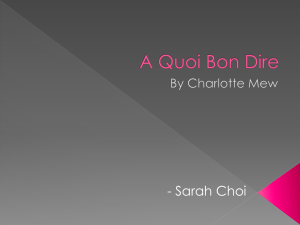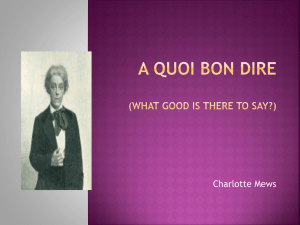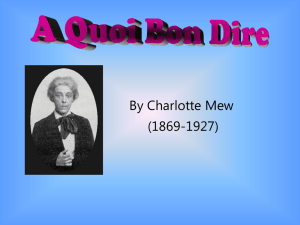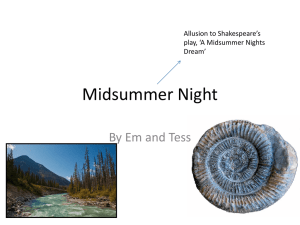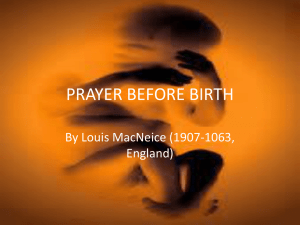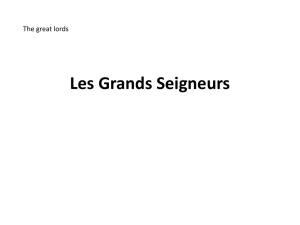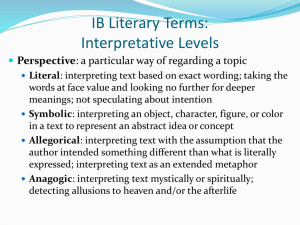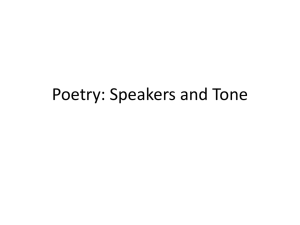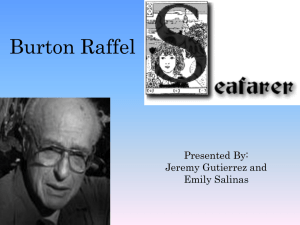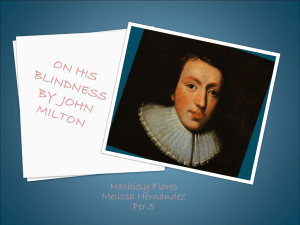A Quoi Bon Dire
advertisement
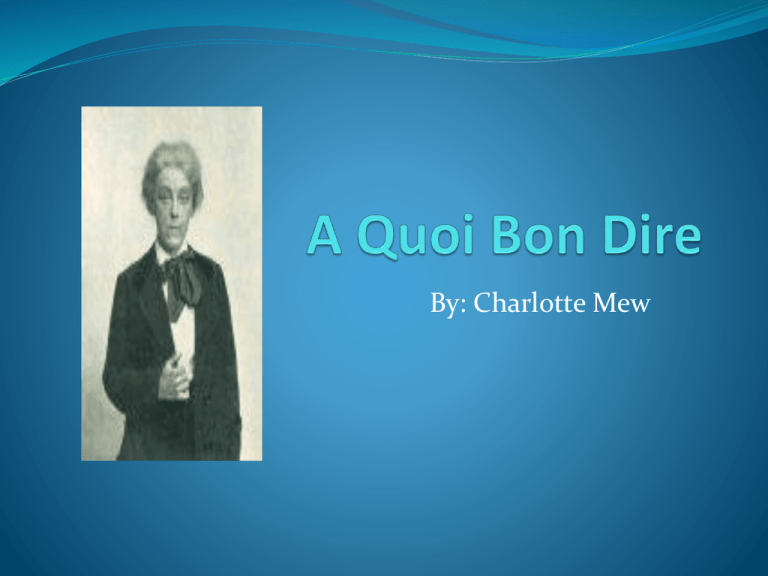
By: Charlotte Mew Mew’s Background Charlotte Mary Mew (15 November 1869 –24 March 1928) was an English poet Her father died in 1898 two of her siblings suffered from mental illness Through most of her adult life, Mew wore masculine attire and kept her hair short Many of her poems are in the form of dramatic monologues and she often wrote from a male point of view After the death of her sister from cancer in 1927, she descended into a deep depression admitted to a nursing home where she eventually committed suicide by drinking Lysol. Past Present Future Seventeen years ago you said Something that sounded like Good-bye: And everybody thinks you are dead But I. A B A B So I as I grow stiff and cold To this and that say Good-bye too; And everybody sees that I am old But you. And one fine morning in a sunny lane Some boy and girl will meet and kiss and swear That nobody can love their way again While over there You will have smiled, and I shall have tossed your hair. Stanza 1 Basis of the poem made clear, written in the first person from the perspective of a person whose partner died seventeen years ago. Although everybody else sees them as dead, in the speaker’s eyes they are still alive and present. Their love has transcended death itself and the speaker is addressing the dead lover throughout the poem. Stanza 2 More information is given in this stanza ‘stiff and cold’ is something of an idiom* revealing that the speaker is on the verge of death. ‘This and that’ - alliteration referring to life; the fact that it seems such a casual phrase Good-bye is capitalised, showing that it is the final good-bye, the farewell of death. *An idiom is a combination of words that has a meaning that is different from the meanings of the individual words themselves. Stanza 3 final stanza - lovers are reunited in death. The use of positive diction* in the line ‘One fine morning in a sunny lane’ marks a change in tone Listing of ‘meet and kiss and swear’ makes the poem have universal relevance, it makes love seem easy and relatable. Consonance with the repetition of the ‘l’ sound throughout this stanza. Creates a soothing tone, like a lullaby which reflects the mood. *diction is the term used to refer to the linguistic style, the vocabulary, and the metaphors used in the writing of poetry. Tone/Theme Very positive Not bitter or regretful as speaker is looking forward to meeting her lover again when she dies. This excitement is projected in the very last sentence “smiled” and “tossed”. Themes: Love & Loss, Reflection, Death Language ž Very simple and easily understood. Helps to convey the memory of her childhood clearly. “It sounded like Good-bye” reinforces idea that the speaker never thought it was the end of the relationship even when everybody else knew it was. “So as I grow stiff and cold” shows that she is aging and growing old. Moving toward death and saying “Goodbye” to people for the last time. Although speaker does not look old in the eyes of her lover. Cont... Sibilance in the stanza creates a slow pace and a calm, somewhat sorrowful tone. Rhyme scheme of ABAB gives a measured pace. Steady rhythm in the first 3 lines of stanzas one and two is iambic tetrameter ( four iambic feet) followed by an abrupt 2 syllable line in lines 4 and 8. Short sharp end to the stanzas, emphasises how the lovers are contrasted with everybody else, and makes their love seem more powerful Comparison Other love poems depressing but this one = quite positive. love depicted in this poem is a happier one than in other poems Muses upon the memory of a young innocent love. This past love has left the speaker regretful but only because of the passing of time. This particular lost love has not left her bitter or damaged her. Overall Testimony to the enduring quality of love. The love shared between the poet and her lover is still alive while she is still alive. Speaker believes the two once separated by death, will be now be united by death. Together they will watch as others love as they have loved. In this gentle poem of loss and ageing, Mew compares the idealistic optimism of youth with the realities of age and mortality. There is no bitterness in the poem’s vision – the final images are carefree, although separated from the ‘fine morning in a sunny lane’ inhabited by the young lovers. Bibliography http://asliteratureavcol.wordpress.com/2011/08/20/a- quoi-bon-dire/ http://allpoetry.com/poem/3650628-Charlotte_Mew__Approaches_to_Love__1869-1928_-byJudith_Chandler
